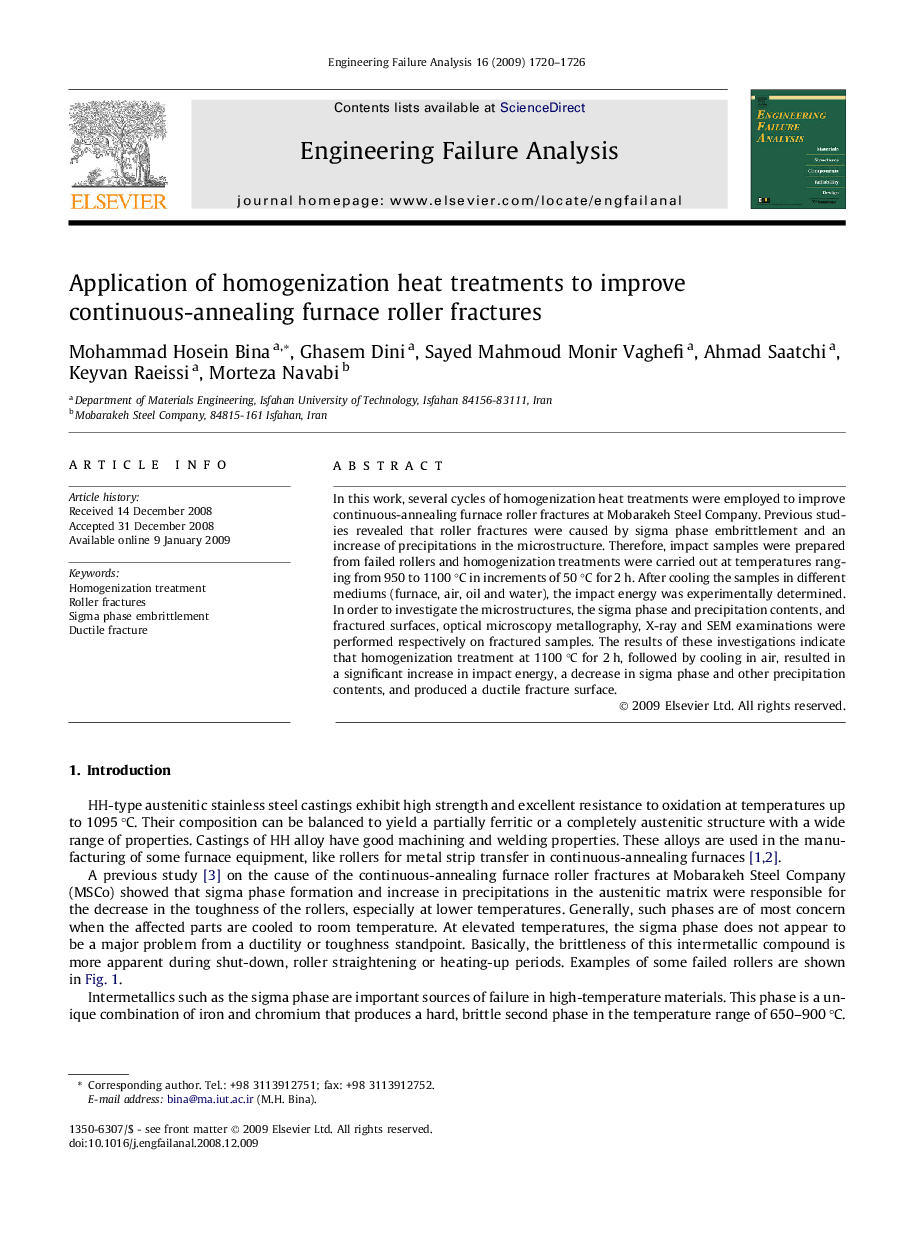| Article ID | Journal | Published Year | Pages | File Type |
|---|---|---|---|---|
| 763899 | Engineering Failure Analysis | 2009 | 7 Pages |
In this work, several cycles of homogenization heat treatments were employed to improve continuous-annealing furnace roller fractures at Mobarakeh Steel Company. Previous studies revealed that roller fractures were caused by sigma phase embrittlement and an increase of precipitations in the microstructure. Therefore, impact samples were prepared from failed rollers and homogenization treatments were carried out at temperatures ranging from 950 to 1100 °C in increments of 50 °C for 2 h. After cooling the samples in different mediums (furnace, air, oil and water), the impact energy was experimentally determined. In order to investigate the microstructures, the sigma phase and precipitation contents, and fractured surfaces, optical microscopy metallography, X-ray and SEM examinations were performed respectively on fractured samples. The results of these investigations indicate that homogenization treatment at 1100 °C for 2 h, followed by cooling in air, resulted in a significant increase in impact energy, a decrease in sigma phase and other precipitation contents, and produced a ductile fracture surface.
